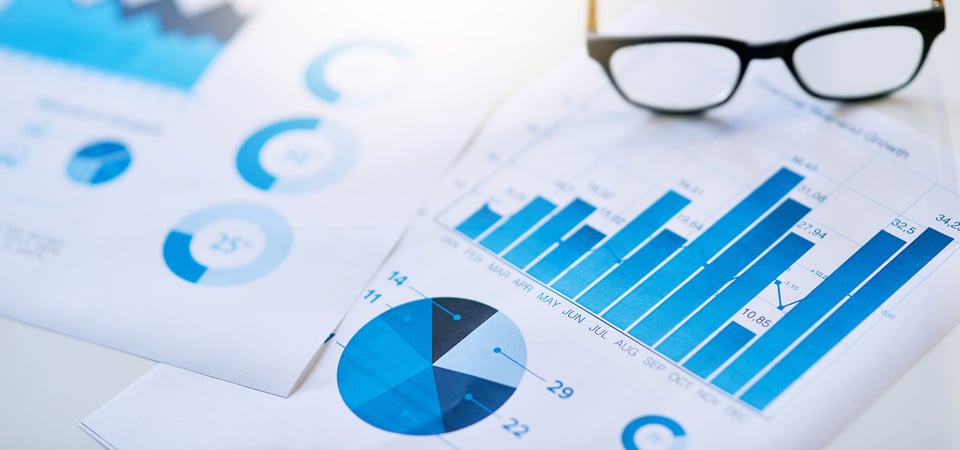by Aldrich Veluz –
Not so long ago, creating a visualization that graphically portrayed volumes of data was a complicated process. It was not a one-person job. And it required the specialized skills of an IT professional.
When a manager or executive needed a visualization, the typical process involved putting in a request to IT, and waiting for them to get around to it—for days, weeks, or worse.
That’s the way it was then. But not now.
The DIY Age
Visualizations have become a crucial business tool in this era of Big Data. With the massive amounts of data currently available—and a quarter million Libraries-of-Congress-worth of new data created daily—there’s simply no better means of portraying the impact of that data than through visualizations.
That’s why, as noted in the Harvard Business Review1, the ability to communicate with visualizations has become a necessary skill for business managers. (And if you don’t have enough of your own data, you can borrow some from the government at Data.gov2, around 190,000 data sets—already paid for with your taxes!)
In recent years many fabulous visualization tools have arrived upon the scene. These tools have revolutionized the process of concepting, designing, and publishing visualizations. They’ve circumvented the need to rely on extensively skilled IT professionals in producing visualizations. They’ve made do-it-yourself visualizations a reality.
Now all that’s required is a bit of training with the visualization tool to be used. With lightning speed, managers and executives can routinely whip out DIY visualizations built upon volumes of data. And they don’t need no stinking IT department to do it. (No offense, IT people; just couldn’t resist slipping in the old movie nod!)
That’s good news. And it’s also bad news.
Building with Bad Blocks
A visualization is simply a tip-of-the-iceberg view of a big chunk of data. That, of course, is why visualizations have become so indispensable; they provide a means of quickly and intuitively making sense out of massive quantities of data.
But it takes a lot of under-the-surface iceberg to keep that tip afloat. And the same concept is true of visualizations. Though just one person now can create that tip, there’s still a large supporting cast involved in keeping that tip afloat.
Most importantly, perhaps, is the work that must—or, at least, should—go into data governance. After all, the quality, usefulness, and even truthfulness of any visualization is no better than the data used in building it. A visualization built with bad building blocks, i.e. bad data, might be misinformative and misleading. In fact, that visualization might do far more harm than good.
And that leads us to the crux of the bad news: The capabilities of today’s visualization tools are tempting many organizations into cutting corners in the data ingestion process. As a result, these organizations are building visualizations with bad building blocks.
Leave That Data Governance Team Alone!
I was recently in a meeting with the CEO of a large financial institution. This organization was taking full advantage of the capabilities of modern visualization tools. And the CEO was asking: “Do we still need to do the data cleanup? Do we still need to fix the data?” (In other words: We don’t need no stinking IT department for this, do we?)
The answer, of course, is: YES! Proper data governance is just as important as it has always been.
The speed and ease with which visualizations can be created don’t eliminate the need for strict data governance. The procedures and processes that have long been in place for assuring and monitoring the quality of data ingestion are still necessary. Though the data ingestion process can certainly be made more efficient, it must not be bypassed.
While you may no longer need IT people to aid you in baking that visualization cake, you still need them to assure that you’re working with quality ingredients.
Capitalize on the Good; Beware of the Bad
The emergence of Power Bi, Tableau, and other cutting-edge visualization tools have had a dramatic impact. A visualization that once might have taken a team of people weeks or months to produce can be now be completed by one person in just hours or minutes.
But the very speed and ease with which visualizations can now be produced have introduced a danger: The ability to streamline the front-end process has tempted many an organization into skimping on the back-end process.
And that’s a temptation that must be resisted. Because visualizations are powerful tools. But, as is true with most tools, they hold the potential of doing great harm as well as great good.
A visualization built upon bad data might be like erecting a new building upon a perilously weak foundation: The end product might be achieved quickly and be pretty to look at, but it’s deceptively dangerous.
#IdeasRealized
Works Cited
1. Harvard Business Review (2016 June) Retrieved from https://hbr.org/2016/06/visualizations-that-really-work
2. Data.gov https://data.gov/

